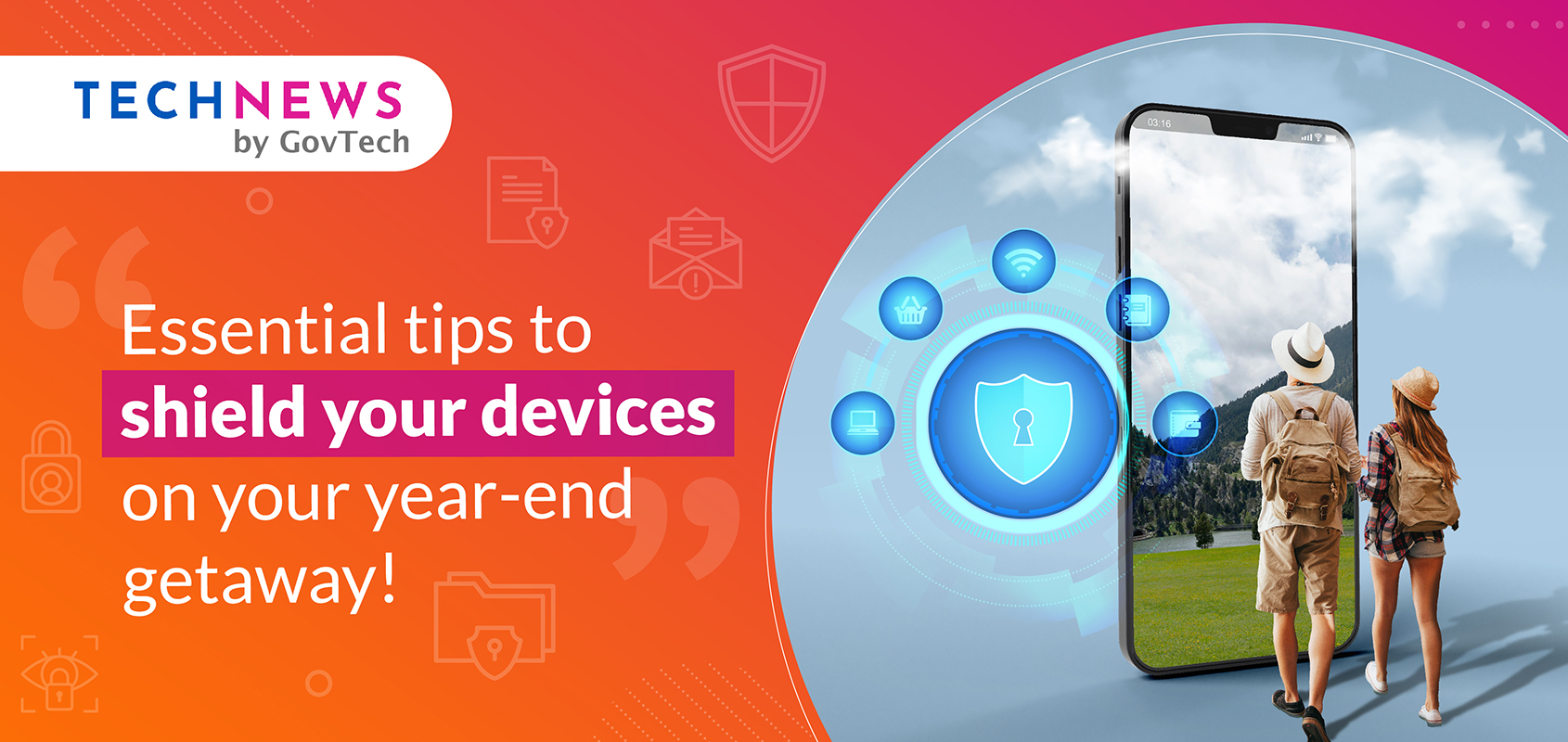Tips to secure your tech devices while travelling

It’s the year end travel season again! Besides packing winter clothes, foreign currency, and toiletries, our tech devices like smartphones and tablets are increasingly must-haves while on the road.
Yes, our devices bring us the convenience of navigation in unfamiliar cities, connection with loved ones back home and even as entertainment during long commutes. But using our devices overseas also means they are more exposed to certain dangers. Read on to find out more about how to safeguard your digital security while travelling.
Steer clear of public wifi
It’s really common for public spaces to offer free wifi nowadays, be it as cafes, airports, or even on public transport.
We don’t think much of it when in Singapore (indeed, we might even turn off wifi when we inadvertently connect to these networks because they are usually slower than our speedy data connections). But they can feel like an oasis of connectivity overseas, especially when we’re travelling without a data roaming plan.
Still, these oases can turn out to be dangerous mirages as wifi networks can be exploited to access our devices. A bad actor connected to the same network that our device is on can even gain control of that device and steal our personal data.
So even though data roaming, local SIMs, and personal hotspots cost money, they are a small price to pay for a secure connection. And if it’s absolutely necessary to join a public wifi network, avoid using portals that hold sensitive information or require you to login as those are opportunities for your credentials and personal data to be stolen.
You should also use VPN for an added layer of protection from unauthorised access to your online activities, as a “VPN protects you by providing an encrypted pipeline starting from your device and running through the public wifi network all the way to the VPN server”, as noted in our earlier article on VPN.
Update your devices and passwords
Before leaving home, it’s best to update all our devices so they have the latest security patches. This is especially important because we’re more likely to want to save on data charges and therefore less likely to update our devices while overseas.
It’s also a good idea to update our passwords (or better yet, passphrases) for all our credentials. This ensures that even if our login information has been exposed due to a data leak, that information is now useless because we’ve changed the credentials. The last thing we want is to waste precious overseas time dealing with an account hack.
(Editor’s Note: I have actually had to deal with this once while on holiday. One of my email accounts got compromised and it was no fun trying to secure the account on a spotty overseas internet connection.)
Avoid public charging stations
Our days travelling are often packed with activities, and we’re often out early in the morning, returning back to our hotels late at night. The batteries of many of our devices might not be able to last for such long periods of time, so public charging stations can look tempting.
Well, resist the urge to use them because “juice jacking” cases are on the rise, with criminals highjacking public chargers and using them to infect devices with malware.
Instead of risking it by plugging your device into such stations, pack your own power bank so that you can give your device a trustworthy electrical boost when required. Friendly reminder: power banks cannot be packed in check-in luggages so be sure that they’re on your carry on baggage instead.
Back up your files
Smartphones are no longer just phones. They are a repository of important documents, precious memories in the form of videos and photos, and other valuable data.
Since we’re out and about so much while travelling, the chances of losing our devices (and all the data in it) go up. Worse, the chances of recovering the devices are lower overseas as we’re in unfamiliar territory and we eventually have to return home.
We can save ourselves a great deal of grief by backing up the files before travelling. It’s also good practice to check if services like Find My iPhone are working properly in case you need them to quickly see if your device is still at the restaurant you accidentally left it at.
Be careful of what you post online
The boarding pass photo was an almost obligatory post for many travellers a few years ago. Thankfully, such posts are now rare as public awareness of the dangers of revealing personal information online has increased.
Still, we should be careful about what we share online on social media and other channels, including information that shows which hotel we’re staying at, and other specific details of our travel itinerary. If we can’t resist posting certain photos, strategically placed stickers can hide sensitive information.
Another way we could protect ourselves is to adjust the privacy settings of our social media accounts so that only close friends can see what we’re up to while travelling.
Our suggestion? Be present and in the moment on your travels! You can always post your holiday snaps and momements at another time!
Be safe not sorry
It can be quite a hassle to practise these tips while travelling and it no doubt takes some effort to keep to them. But they will help us avoid bigger troubles that are even more of a killjoy should the unfortunate happen.
So it’s better to be safe than sorry so that we can enjoy a trip free from anxiety about our digital security. Safe travels!



